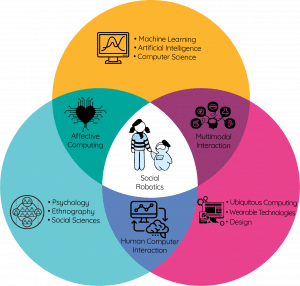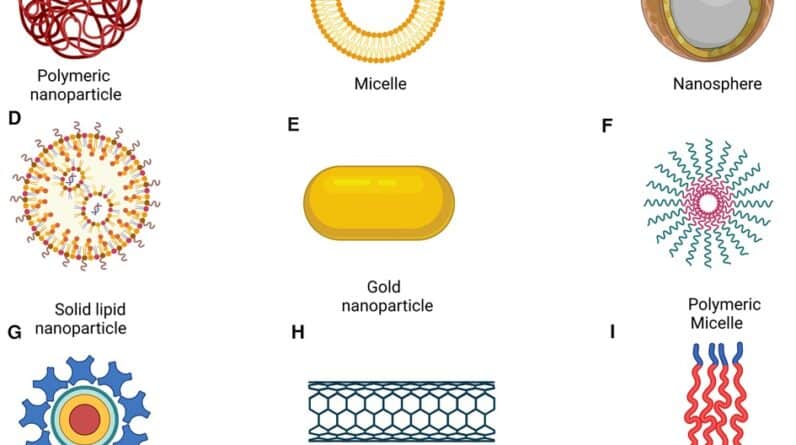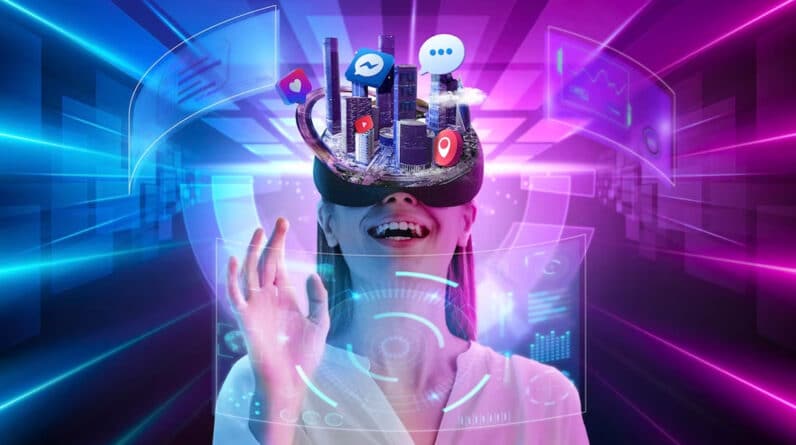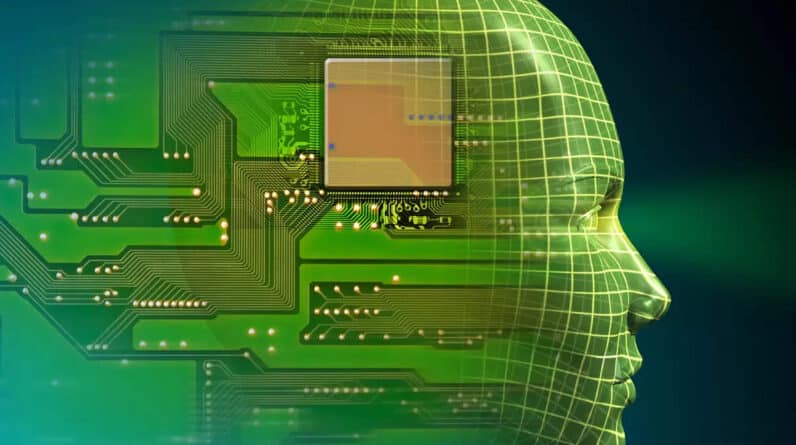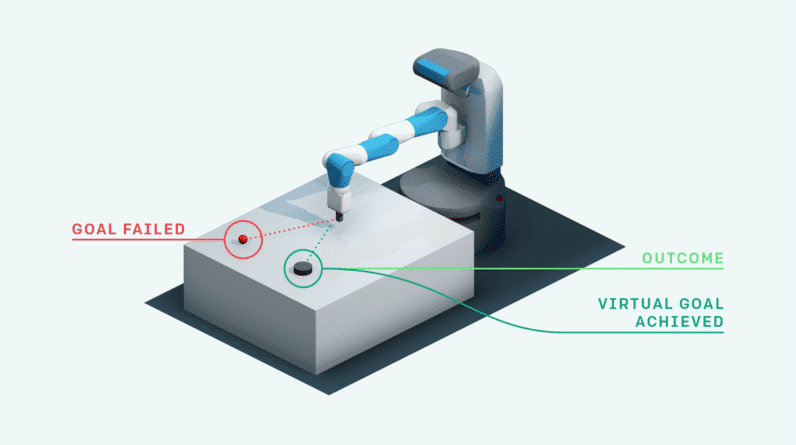Imagine a world where robots can seamlessly interact with humans, understanding their emotions, responding to their commands, and seamlessly navigating the physical world alongside us. This is the exciting reality that is being shaped by the convergence of robotics and artificial intelligence (AI). As the boundaries between the physical and digital realms become blurred, new possibilities emerge that have the potential to revolutionize industries, improve quality of life, and transform the way we work and live. In this article, we will explore the incredible advancements in robotics and AI, highlighting the ways in which these technologies are coming together to create a truly connected future.

The Evolution of Robotics
Industrial Robotics
Industrial robotics has been a key component of the manufacturing industry for several decades. With the ability to perform repetitive and dangerous tasks with precision and efficiency, industrial robots have revolutionized production lines. These robots are often used in areas such as assembly, welding, and material handling. Over the years, advancements in technology have made industrial robots more capable and adaptable, allowing them to collaborate with humans in a safe and efficient manner.
Service Robotics
Service robotics is a branch of robotics that focuses on developing robots to perform tasks in non-industrial settings, such as homes, hospitals, and hotels. These robots are designed to assist humans in daily tasks, provide entertainment, or support individuals with special needs. Service robots can range from simple household cleaning robots to sophisticated humanoid robots capable of complex interactions and communication with humans. The emergence of service robotics has opened up new possibilities for automation in various sectors, contributing to increased convenience and improved quality of life.
Collaborative Robotics
Collaborative robotics, also known as cobotics, is a field that emphasizes the cooperation between humans and robots. Unlike traditional industrial robots that typically operate separately from human workers, collaborative robots are designed to work alongside humans in a shared workspace. These robots are equipped with sensors and intelligent algorithms that enable them to detect and respond to human presence and movement, ensuring safe and efficient collaboration. With their ability to perform tasks that require precision and strength, while also providing human-like dexterity, collaborative robots have the potential to transform numerous industries, including manufacturing, healthcare, and logistics.
The Rise of Artificial Intelligence
Machine Learning
Machine learning is a subset of artificial intelligence that focuses on enabling machines to learn and improve from experience without being explicitly programmed. By analyzing vast amounts of data, machine learning algorithms can identify patterns and make predictions or decisions based on that information. This technology has been widely applied in various domains, including image recognition, natural language processing, and recommender systems. Machine learning algorithms have the capability to continuously learn and adapt, making them crucial in the development of intelligent systems.
Deep Learning
Deep learning is a subfield of machine learning that utilizes artificial neural networks to learn and make predictions. Inspired by the structure and function of the human brain, deep learning algorithms are designed to process and understand complex data, such as images, speech, and text. With the availability of large datasets and advancements in computing power, deep learning has achieved remarkable success in tasks such as image and speech recognition, natural language understanding, and autonomous driving. The ability of deep learning models to extract high-level features and make accurate predictions has significantly impacted numerous industries, including healthcare, finance, and cybersecurity.
Natural Language Processing
Natural language processing (NLP) is a branch of artificial intelligence concerned with the interaction between computers and human language. NLP algorithms enable machines to understand, interpret, and generate human language through techniques such as syntax analysis, sentiment analysis, and machine translation. With the rapid adoption of voice assistants, chatbots, and language-based applications, NLP has become increasingly crucial in enabling seamless communication between humans and machines. NLP techniques have also been applied in areas such as information retrieval, automatic summarization, and sentiment analysis, influencing various sectors, including customer service, healthcare, and content creation.

The Integration of Robotics and AI
Robotic Process Automation
Robotic Process Automation (RPA) involves the use of software robots to automate repetitive and rule-based tasks typically performed by humans. RPA technology combines elements of both robotics and AI, allowing robots to interact with digital systems, extract and process data, and perform tasks in a way that simulates human actions. By automating mundane and time-consuming processes, RPA enables organizations to improve efficiency, accuracy, and productivity while freeing up human employees to focus on more valuable and creative tasks. RPA holds significant potential across industries, including finance, customer service, and healthcare administration.
Teleoperation
Teleoperation involves controlling robots remotely from a distance using sensory feedback and communication technologies. This integration of robotics and AI enables the operation of robots in environments that are hazardous or inaccessible to humans, such as deep-sea exploration, space missions, or disaster response. Through teleoperation, humans can guide robots to perform complex tasks that require human judgment, decision-making, and manipulation skills. The combination of robotics and AI in teleoperation allows for the safe and effective execution of missions in remote or dangerous environments, extending the capabilities of human operators.
Symbiotic Autonomous Systems
Symbiotic autonomous systems refer to the integration of robots and AI in a way that allows for mutual benefits and cooperation between the two. This concept envisions a future where robots and AI systems can adapt and learn from each other, collaborating in a harmonious and complementary manner. Symbiotic autonomous systems leverage the strengths of robotics in physical tasks and AI in cognitive tasks, resulting in enhanced capabilities, efficiency, and adaptability. This integration has the potential to revolutionize fields such as transportation, healthcare, and exploration, paving the way for the development of advanced human-robot partnerships.
Applications of Robotics and AI
Manufacturing and Automation
The application of robotics and AI in manufacturing and automation has significantly transformed the production processes. Industrial robots, equipped with AI functionalities, have streamlined manufacturing operations, increased precision, and improved productivity. From assembly lines to quality control, robots can perform repetitive tasks with accuracy and efficiency, leading to cost reduction and enhanced product quality. Additionally, AI-powered systems can monitor and optimize the production process, identify defects or anomalies, and enable predictive maintenance, ensuring smooth operations and minimizing downtime.
Healthcare and Medical Robotics
Robotics and AI have revolutionized the healthcare industry by enabling precise diagnostics, efficient surgeries, and improved patient care. Surgical robots, controlled by skilled surgeons, allow for minimally invasive procedures with enhanced precision and reduced risks. AI algorithms aid in medical image analysis, helping doctors detect and diagnose diseases at an early stage. Robotic exoskeletons assist patients with mobility impairments, offering increased independence and rehabilitation opportunities. Furthermore, AI-powered chatbots and virtual assistants enhance healthcare accessibility, providing personalized medical advice and support.
Logistics and Warehouse Automation
The integration of robotics and AI has revolutionized logistics and warehouse operations, contributing to increased efficiency and productivity. Autonomous robots equipped with AI capabilities can navigate warehouses, sort and organize inventory, and optimize storage space. These robots can work alongside human workers, reducing manual labor, minimizing errors, and enabling faster order fulfillment. Furthermore, AI algorithms leverage real-time data to optimize scheduling, route planning, and demand forecasting, improving supply chain management and reducing costs. Robotics and AI in logistics have enabled faster and more accurate delivery, contributing to improved customer satisfaction.

Challenges in Robotics and AI
Ethical Considerations
As robotics and AI become increasingly integrated into society, ethical considerations arise. Questions around the impact of AI on privacy, bias in algorithms, and the potential misuse of robotics technology must be addressed. Ethical frameworks and guidelines are being developed to ensure responsible development and deployment of robotics and AI systems.
Safety and Security
Safety is a significant concern when it comes to robotics and AI. Ensuring that robots operate safely alongside humans, minimizing the risk of accidents or injuries, is crucial. Moreover, securing robotic systems against cyber threats and unauthorized access is paramount to prevent malicious exploitation or damage to critical infrastructure.
Job Displacement
The integration of robotics and AI has the potential to automate tasks traditionally performed by humans, leading to concerns about job displacement. While the automation of certain tasks may lead to the elimination of some jobs, it also creates new opportunities for reskilling and job creation in emerging fields. It is essential to address the impact on the workforce and develop strategies to ensure a smooth transition and equitable distribution of opportunities.
Benefits of Robotics and AI
Increased Efficiency and Productivity
The incorporation of robotics and AI technologies improves efficiency and productivity across various sectors. Robots can perform tasks faster, with higher accuracy and consistency compared to human workers. AI algorithms optimize processes, reducing errors, minimizing downtime, and enabling predictive maintenance. The combination of robotics and AI streamlines operations, leading to enhanced efficiency and increased output.
Improved Quality and Precision
Robotics and AI systems contribute to improved quality and precision in a variety of applications. Robots can perform tasks with precise control and accuracy, minimizing errors and defects. AI algorithms analyze data and identify patterns, enabling better decision-making and predicting potential issues. This level of precision leads to higher-quality products, more accurate diagnoses, and improved outcomes in various domains.
Enhanced Safety and Risk Mitigation
Robotics and AI technologies enhance safety and risk mitigation in hazardous or complex environments. Robots can perform dangerous tasks, reducing the risk of human injuries or fatalities. AI-powered systems detect potential risks, monitor equipment performance, and provide real-time alerts, preventing accidents and reducing downtime. By removing humans from dangerous situations and enabling proactive risk management, robotics and AI contribute to safer and more secure operations.
The Future of Robotics and AI
Advancements in Humanoid Robots
The future of robotics holds the promise of more advanced humanoid robots. As technology improves, humanoid robots will become more lifelike in appearance and behavior, capable of interacting and collaborating with humans in natural and intuitive ways. These robots may find applications in areas such as healthcare, customer service, and entertainment, providing companionship, assistance, and performing a variety of tasks in human-like environments.
Autonomous Vehicles and Drones
Autonomous vehicles and drones are expected to play a significant role in the future of transportation and logistics. With advancements in AI algorithms and sensor technologies, autonomous vehicles will become safer, more efficient, and more widely adopted. Self-driving cars and delivery drones will revolutionize transportation, offering improved mobility, reduced traffic congestion, and efficient logistics operations.
Smart Homes and Personal Assistance Systems
The integration of robotics and AI will continue to shape the future of smart homes and personal assistance systems. With the advancement of voice recognition, natural language processing, and machine learning, smart homes will become more intuitive and responsive to human needs. Personal assistance robots will provide personalized services, such as housekeeping, organizing schedules, and even assisting with healthcare monitoring.
Ethical Implications of Robotics and AI
Ethical Design and Decision-making
Development and deployment of robotics and AI systems need to follow ethical principles to ensure fairness, transparency, and accountability. This includes considering biases in algorithms, addressing privacy concerns, and ensuring that decision-making processes are aligned with human values.
Privacy and Data Protection
The integration of robotics and AI involves the collection and analysis of vast amounts of personal data. Protecting privacy and ensuring the security of sensitive information is crucial. Stricter regulations and robust cybersecurity measures are needed to safeguard individuals’ privacy rights and prevent unauthorized access or misuse of data.
Human-Robot Interaction
As humans interact more frequently and intimately with robots, ethical considerations regarding the boundaries of human-robot relationships arise. Establishing guidelines for appropriate and respectful human-robot interaction, defining the roles and responsibilities of both parties, and ensuring that robots are not treated as mere objects are important aspects to address.

Emerging Trends in Robotics and AI
Social Robotics
Social robotics focuses on developing robots that can interact with humans in a socially intelligent and engaging manner. These robots have the ability to perceive human emotions and respond appropriately. Social robots find applications in fields such as healthcare, education, and entertainment, where their ability to establish emotional connections and provide companionship has a positive impact on human well-being.
Robot Swarms
Robot swarms refer to a collective of autonomous robots that work together to accomplish a common goal. These swarms can exhibit emergent behaviors, where the collective intelligence of the group exceeds the capabilities of individual robots. This concept finds applications in various domains, including search and rescue operations, environmental monitoring, and collaborative tasks in manufacturing or agriculture.
Digital Twins
Digital twins are virtual representations of physical objects or systems that are continuously updated with real-time data. Combining IoT sensors, AI algorithms, and 3D modeling, digital twins provide a holistic view of physical assets and facilitate simulation, analysis, and optimization. This technology enables predictive maintenance, improves efficiency, and supports decision-making across industries such as manufacturing, construction, and urban planning.
Collaboration between Humans and Robots
Cooperative Tasks
Collaboration between humans and robots in cooperative tasks holds great potential. Robots can assist with physically demanding tasks, share the workload, and provide support in complex operations. This collaborative approach enhances human performance, increases productivity, and promotes a safer working environment.
Training and Learning
Robots can be trained to learn from human expertise, acquiring skills and knowledge through collaborative training. Human instructors can guide robots in performing tasks, demonstrating techniques, and providing feedback. This collaborative learning process facilitates the transfer of skills and enables robots to adapt to dynamic environments more effectively.
Human-Machine Interface
Developing intuitive and user-friendly human-machine interfaces is crucial for effective collaboration between humans and robots. User interfaces need to be designed in a way that enables seamless communication and interaction, facilitating task execution, monitoring, and control. The integration of natural language processing and gesture recognition allows for more intuitive and efficient interfaces, enabling users to interact with robots using familiar methods.


